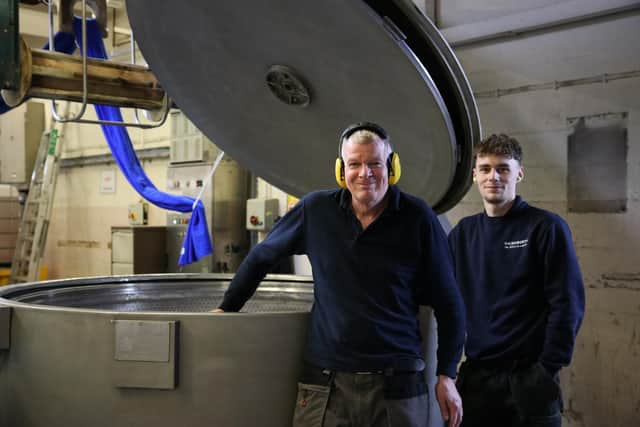AW Hainsworth: How a 240-year-old Yorkshire textile manufacturer achieved zero to landfill status
AW Hainsworth, a 240-year-old heritage textile mill in Leeds, which over the years has helped to produce the uniforms of British soldiers at the Battle of Waterloo, cloaks worn by the Death Eaters in Harry Potter and snooker table cloths, tracked and measured its waste to develop a plan to reduce it to zero.
The company partnered with Reconomy, a circular waste management provider with clear traceability for waste streams to reach its goal.
Advertisement
Hide AdAdvertisement
Hide AdReconomy outsources management services to approved local providers to minimise transport costs and emissions.


The recycling centre it uses recovers 97 per cent of all materials received and exceeds MRF Code of Practice requirements.
The manufacturer, which creates woollen cloth, high-performing textiles, and iconic fabrics for customers worldwide, has invested in better machinery to manage on-site waste by installing energy-efficient plastic and cardboard balers, each sent to recycling. AW Hainsworth has also ensured the recycling process is as simple as possible, with improved signage throughout the mill and employee waste management education.
In the last 12 months, the textile producer has completed several projects to help reach its sustainability goals, increase operational efficiency, and reduce energy consumption and waste.
Advertisement
Hide AdAdvertisement
Hide AdA key example is using undyed yarns in partnership with some aviation customers to create sustainable seating and vertical surface fabrics. Using 100 per cent undyed wool reduces energy, water, and waste effluent in manufacturing.
AW Hainsworth has also analysed ways to reduce packaging waste from suppliers. This involved working with a regular yarn supplier to reduce the packaging weight by 79.92 per cent and condensing the packaging to reduce freight space by 9.51 per cent.
Another supplier switched from shipping products in disposable dye cones to reusable ones, ensuring empty products no longer entered the waste stream. The supplier now collects and re-enters the cones into production, saving 936kg of cones from being sent to waste in 2022 and 948kg in 2023. This small switch resulted in nearly 45,000 cones being recycled.
Other waste-saving steps include offering employees working technology equipment and recycling electronics through Revive IT.
Advertisement
Hide AdAdvertisement
Hide AdAmanda McLaren, managing director of AW Hainsworth, said: “As manufacturers, we know that our processes can result in high emissions. We continuously monitor our energy and water use and remain conscious of ways we can limit waste while continuing to operate efficiently and effectively.”
She added: “We had already made good progress with improving waste reduction on smaller projects in specific departments. However, looking at our overall waste management process and strategy for site-wide improvements was important.
“We started tracking our waste streams to measure what was being re-used or recycled and what was being sent to energy recovery, making significant changes and improvements.
"There is still work to do to increase recycling and reduce energy recovery, which will form part of our goals for waste management over the next three years.”